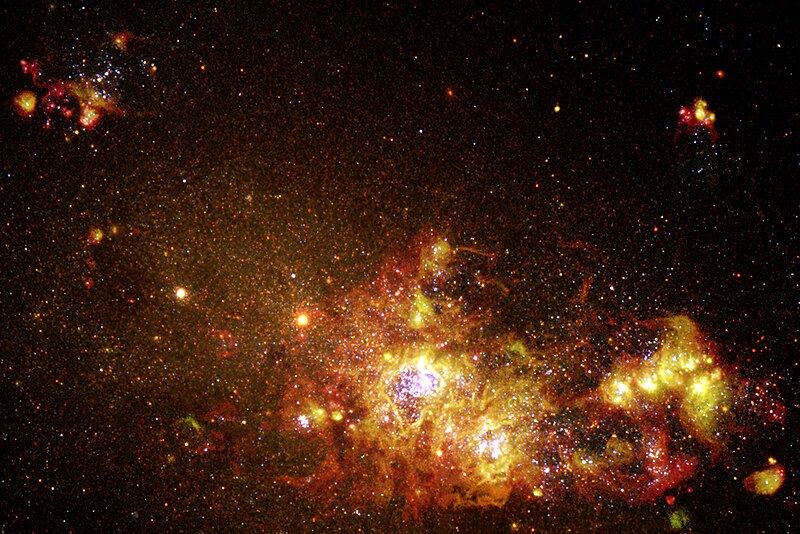Ficheru:Fireworks of Star Formation Light Up a Galaxy - GPN-2000-000877.jpg

Tamañu d'esta previsualización: 800 × 534 pixels. Otres resoluciones: 320 × 214 pixels | 640 × 427 pixels | 1024 × 683 pixels | 1280 × 854 pixels | 1596 × 1065 pixels.
Ficheru orixinal (1596 × 1065 píxels, tamañu de ficheru: 1,67 MB, triba MIME: image/jpeg)
Historial del ficheru
Calca nuna fecha/hora pa ver el ficheru como taba daquella.
| Data/Hora | Miniatura | Dimensiones | Usuariu | Comentariu | |
|---|---|---|---|---|---|
| actual | 00:41 9 abr 2009 |  | 1596 × 1065 (1,67 MB) | BotMultichillT | {{Information |Description={{en|1=Located some 13 million light-years from Earth, NGC 4214 is currently forming clusters of new stars from its interstellar gas and dust. In this Hubble image, we can see a sequence of steps in the formation and evolution o |
Usu del ficheru
La páxina siguiente usa esti ficheru:
Usu global del ficheru
Estes otres wikis usen esti ficheru:
- Usu en af.wikipedia.org
- Usu en ar.wikipedia.org
- Usu en el.wikipedia.org
- Usu en en.wikipedia.org
- Usu en es.wikipedia.org
- Usu en eu.wikipedia.org
- Usu en fr.wikipedia.org
- Usu en hr.wikipedia.org
- Usu en id.wikipedia.org
- Usu en it.wikipedia.org
- Usu en ja.wikipedia.org
- Usu en ko.wikipedia.org
- Usu en lb.wikipedia.org
- Usu en mk.wikipedia.org
- Usu en nl.wikipedia.org
- Usu en no.wikipedia.org
- Usu en pl.wikipedia.org
- Usu en pt.wikipedia.org
- Usu en ro.wikipedia.org
- Usu en si.wikipedia.org
- Usu en sk.wikipedia.org
- Usu en sr.wikipedia.org
- Usu en tr.wikipedia.org
- Usu en uk.wikipedia.org
- Usu en vi.wikipedia.org

